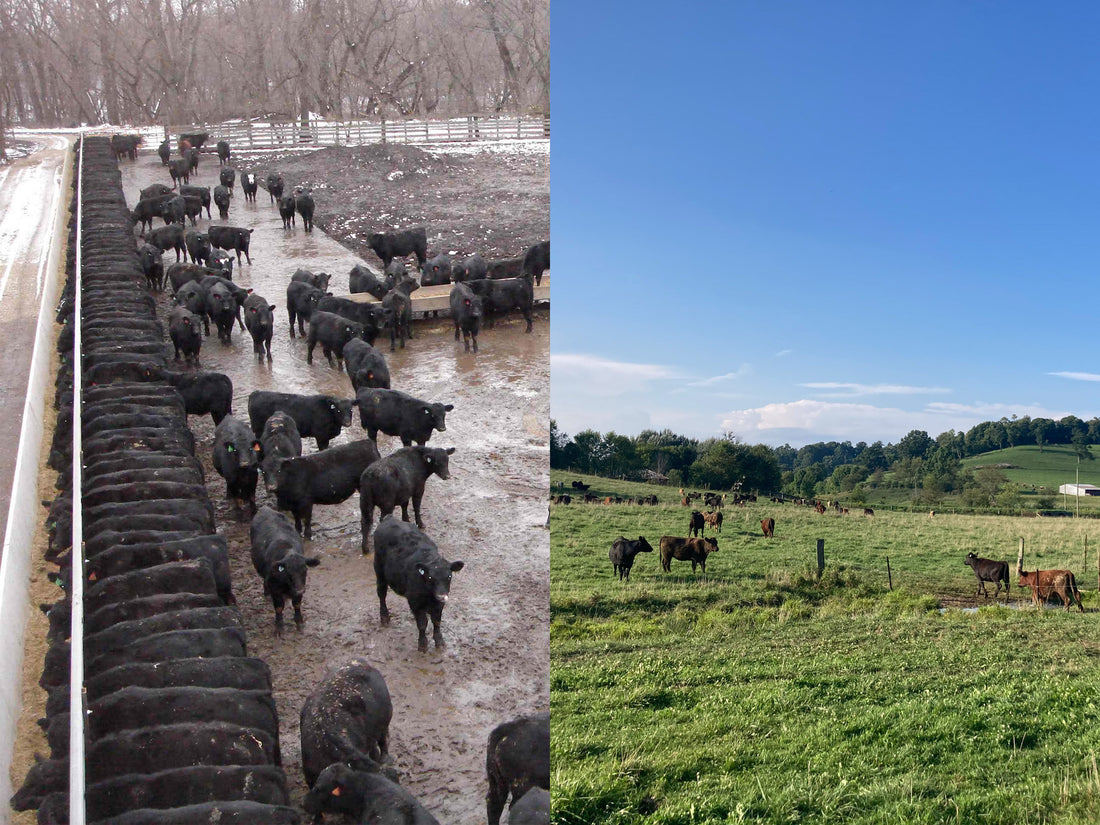
The Differences Between Grass-Fed and Grain-fed Tallow
When it comes to tallow, not all sources are created equal. The quality of tallow depends significantly on the diet and lifestyle of the cows it’s derived from. At Rhode Island Remedies, we use only organic, grass-fed, and grass-finished tallow for our flagship product, Tallow in the Raw, to ensure you’re getting the purest and most nutrient-rich skincare possible. Let’s explore the key differences between tallow from grass-fed cows and non-grass-fed cows, and why grass-fed tallow is the superior choice for your skin.
1. Nutrient Profile
Grass-fed cows graze on nutrient-rich pastures, which translates to a healthier and more nutrient-dense tallow. Grass-fed tallow is higher in:
- Vitamins A, D, E, and K: These fat-soluble vitamins are crucial for skin health, promoting hydration, repair, and a youthful glow.
- Conjugated Linoleic Acid (CLA): Known for its anti-inflammatory and antioxidant properties, CLA helps soothe irritated skin and combat free radical damage.
- Omega-3 Fatty Acids: Grass-fed tallow contains a balanced ratio of omega-3 to omega-6 fatty acids, which supports skin’s elasticity and reduces inflammation.
Non-grass-fed cows, typically raised on grain-based diets, produce tallow with lower levels of these essential nutrients. This can reduce the effectiveness of the tallow when used in skincare.
2. Purity and Toxins
The environment and diet of cows significantly impact the purity of their tallow. Grass-fed cows are raised on open pastures, free from synthetic pesticides, antibiotics, and hormones, resulting in cleaner and safer tallow.
In contrast, non-grass-fed cows often consume feed treated with pesticides and may be exposed to hormones and antibiotics. These substances can accumulate in the fat and compromise the purity of the tallow.
At Rhode Island Remedies, our Tallow in the Raw is made with tallow sourced exclusively from organic, grass-fed, and grass-finished cows, ensuring a product that is as clean as it is effective.
3. Sustainability and Ethics
Grass-fed farming practices emphasize sustainability and animal welfare. Cows raised on pasture help improve soil health, reduce greenhouse gas emissions, and contribute to biodiversity. Grass-fed cattle also live in more humane conditions, grazing freely and leading healthier lives.
On the other hand, non-grass-fed cows are often raised in confined feedlots, contributing to environmental degradation and raising ethical concerns about animal treatment.
When you choose Tallow in the Raw, you’re supporting sustainable, humane farming practices that align with the values of Rhode Island Remedies.
4. Texture and Quality of Tallow
The diet of a cow affects the texture, color, and overall quality of its tallow. Grass-fed tallow is typically smoother and richer, with a pleasant, creamy consistency, making it ideal for skincare applications.
Non-grass-fed tallow, in comparison, may have a greasier texture and lack the same luxurious feel, making it less desirable for premium products like Tallow in the Raw.
5. Skincare Benefits
The nutrient-rich profile of grass-fed tallow makes it far more effective in nourishing, hydrating, and healing the skin. Its balanced composition works harmoniously with your skin’s natural oils, delivering visible results without irritation.
Non-grass-fed tallow lacks the same concentration of beneficial compounds, which can diminish its ability to provide deep hydration and promote skin health.
Why Rhode Island Remedies Chooses Grass-Fed Tallow
At Rhode Island Remedies, we are committed to offering the best skincare products, which is why Tallow in the Raw is made exclusively from grass-fed and grass-finished tallow. We believe in providing our customers with the cleanest, most effective skincare solutions while supporting sustainable and ethical farming practices in the U.S.
When you choose Tallow in the Raw, you’re not just nourishing your skin—you’re making a conscious choice to support quality, sustainability, and holistic wellness.
